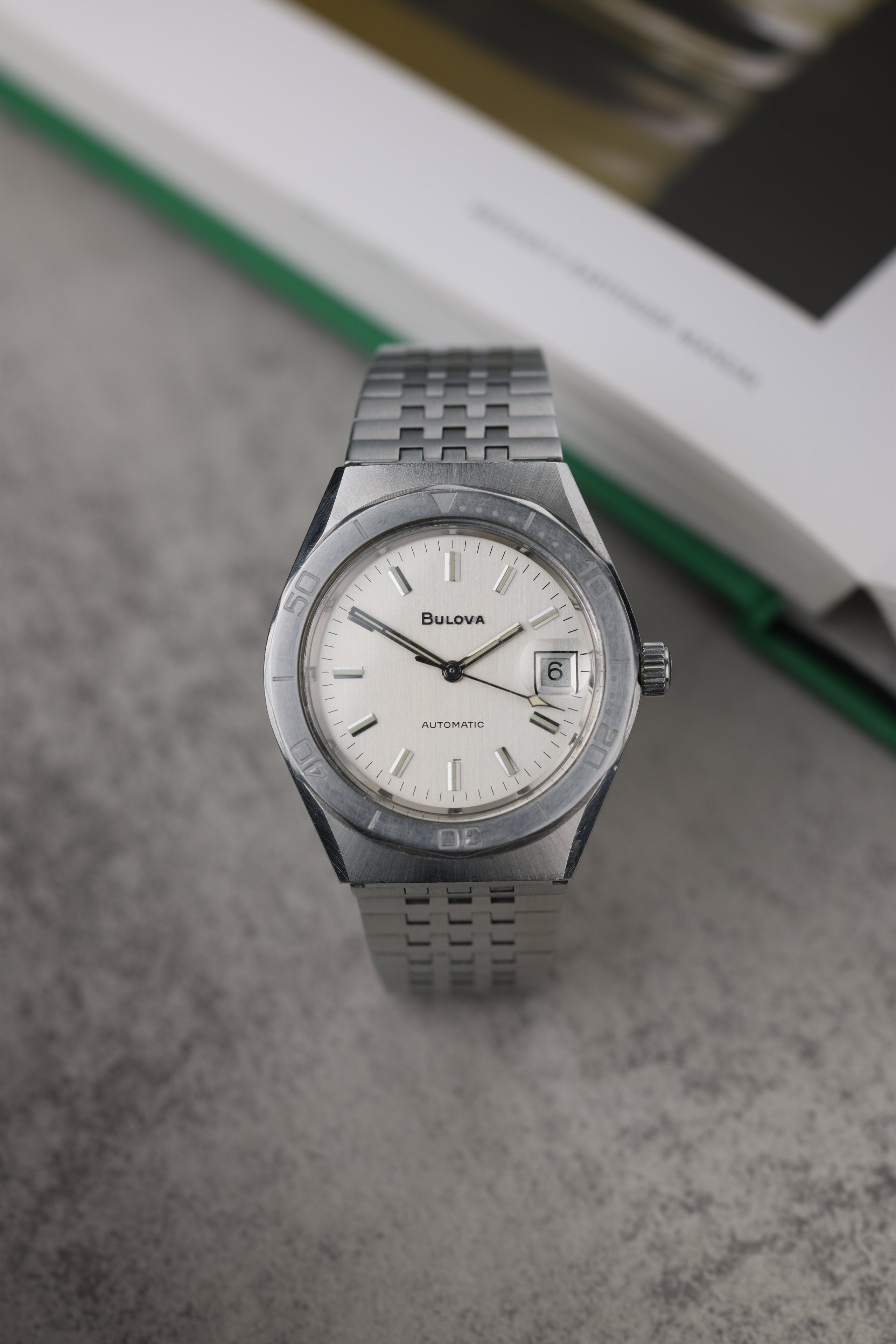In the colourful tapestry of 1970s dive watch design, few brands dared to be as boldly American as Bulova. Whilst their Swiss counterparts pursued technical perfection, Bulova embraced something equally valuable: character. This 1979 diver represents the tail end of that golden era, when American ingenuity met underwater adventure in the most unexpected ways.
Bulova's dive watch story began in the early 1960s with the introduction of its Oceanographer series. Still, it was the arrival of the infamous "Devil Diver" in the late 1960s that truly captured the imagination. The name came from Bulova's mischievous decision to rate their divers to 666 feet rather than the more conventional 200 metres—a marketing masterstroke that somehow made perfect sense in an era defined by breaking conventions.
This particular example from 1979 showcases one of vintage diving's most sought-after characteristics: a genuinely ghosted bezel. Unlike the artificial ageing applied to modern watches, this patina developed naturally over four decades, transforming the original stark black and red insert into something altogether more mysterious. The fade creates subtle gradients that shift with the light—a reminder that the best vintage watches are living documents of their own history.
The case design reflects Bulova's distinctive approach to dive watch architecture. Rather than copying European templates, American designers created their own visual language—one that favoured bold proportions and unusual details. The bezel action remains crisp despite its age, clicking through its 120-position rotation with the satisfying precision of quality American manufacturing.
What makes Bulova divers particularly compelling is their position in horological history. These weren't watches trying to be something else—they were unashamedly American, designed for American divers, sold in American shops, and built to American sensibilities. The dial layout, hand shapes, and case proportions all speak to a design philosophy that prioritised legibility and function over European elegance.
By 1979, Bulova was already feeling pressure from the quartz revolution that would reshape the entire industry. This makes examples like this 962.006 particularly poignant—they represent the end of an era when mechanical dive watches were essential tools rather than lifestyle accessories. The automatic movement inside continues to tick with the reliability that made Bulova a household name across America.
The ghosted bezel transforms this from merely a vintage dive watch into something approaching folk art. The fade pattern is unique to this example—no two ghosts are beautifully quite the same way. It's a reminder that vintage watches aren't just about specifications and provenance; they're about the stories told through natural ageing and authentic wear.
For collectors seeking something genuinely different from the standard Swiss alternatives, this Bulova offers character in spades. It's a piece of American design history that tells excellent time, exactly what the best vintage watches should be.
The late 1970s might have been uncertain times for the watch industry, but pieces like this demonstrate that American creativity remained undimmed. It's a watch that speaks to divers, collectors, and anyone who appreciates design that dares to be different.

















